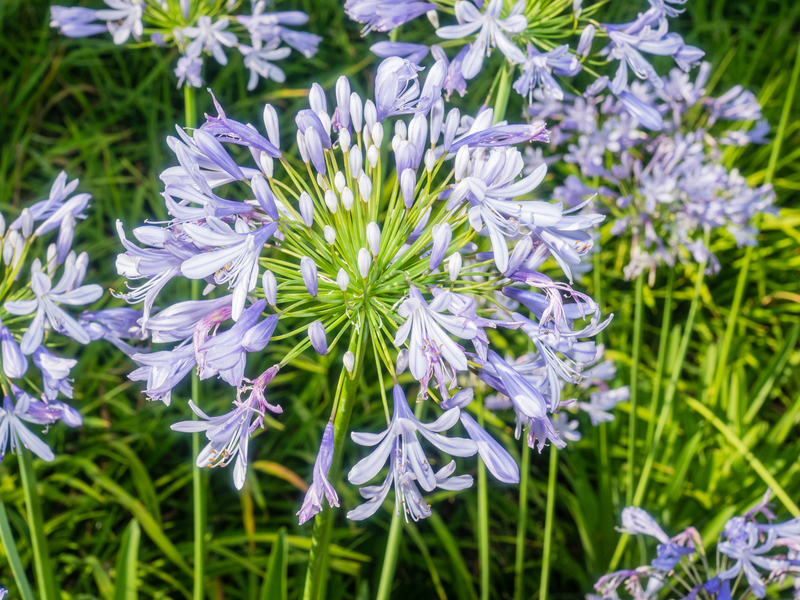3 Comprehensive Tips for Hassle-Free Weed Control
Posted on 15/08/2025
3 Comprehensive Tips for Hassle-Free Weed Control
Weeds can transform a beautiful garden or well-kept lawn into a messy, chaotic eyesore in just a short time. If you're seeking smart, simple, and comprehensive weed control solutions, this article will guide you through the top three proven methods for a hassle-free weed management routine. Whether you're a beginner or an experienced gardener, these tips will help you maintain an immaculate outdoor space with minimal effort.
1. Embrace Preventative Practices for Long-Term Success
The most effective way to achieve weed control without constant hassle is to address the issue before it starts. A proactive approach minimizes the amount of time spent pulling weeds and maintains your garden's health year-round. Here are some essential weed prevention strategies:
Mulching: Nature's Protective Blanket
Mulch is one of the gardener's best friends when it comes to blocking weed growth. By applying a thick layer of organic mulch--such as wood chips, shredded leaves, or straw--around your plants, you both suppress weed seeds and preserve soil moisture.
- Prevents sunlight from reaching weed seeds, minimizing germination
- Improves soil health and structure as it decomposes
- Regulates soil temperature, benefiting desired plants
Tip: For best results, apply mulch at least 2-3 inches thick and replenish as needed to maintain coverage. Make sure not to pile it directly against plant stems or trunks to prevent rot.
Landscape Fabric: An Extra Layer of Protection
Landscape fabric (also called weed barrier) is a woven or non-woven textile placed underneath mulch or gravel. It forms a physical blockade, stopping sunlight from reaching the soil and discouraging weed establishment.
- Reduces the need for chemical herbicides and repeated hand-pulling
- Best for garden beds, pathways, and under hardscape features
Pro Tip: Use high-quality, breathable fabric to ensure water and nutrients penetrate the soil. Avoid plastic sheeting, which can suffocate roots and lead to drainage issues.
Proper Lawn and Garden Care
A thick, healthy lawn or lush flower bed outcompetes weeds naturally. Providing the right amount of water, fertilizer, and attention goes a long way in naturally suppressing unwanted growth.
- Mow your grass at the recommended height to encourage dense turf
- Water deeply and infrequently to help roots grow strong
- Feed your plants and lawn with balanced nutrients to keep them vigorous

2. Master Smart, Targeted Weed Removal Techniques
Even with the best preventive measures, some weeds may sneak through. Knowing how to eliminate weeds easily and efficiently will save you countless hours and frustration. Consider these best practices for quick and effective weed extraction:
Hand-Pulling: The Classic Approach (with a Twist)
While hand-pulling is a classic weed control method, doing it right is key to minimizing regrowth and effort.
- Pull weeds after rain or watering, when soil is soft and roots come out easily
- Use ergonomic tools like specialized weeders or trowels to reduce strain
- Remove the entire root system, especially for persistent perennial weeds
Tip: Consider setting aside just 10-15 minutes once or twice a week for weed patrol. Staying on top of newly sprouted weeds halts their spread.
Soil-Safe Organic Herbicides
If you're facing a major weed outbreak, sometimes a targeted natural herbicide can help without harming your plants or polluting your garden. Some proven organic weed suppression methods include:
- Vinegar-based sprays: Particularly effective on young, annual weeds. Apply on a sunny day for maximum effect.
- Boiling water: Safely kill weeds in cracks of driveways, sidewalks, or patios.
- Corn gluten meal: Works as a pre-emergent (prevents seed germination), ideal for lawns and large open garden beds.
Caution: Even organic options can damage desireable plants if used improperly. Always aim carefully and follow instructions.
Flame Weeding: High-Heat Weed Elimination
Flame weeders use intense heat to destroy the cells of unwanted plants--fast and effective for driveways, pathways, graveled areas, and open beds before planting.
- Leaves no toxic residue
- Can be used when the soil is too wet or compacted for hand-pulling
- Not suitable for use around dry plant material or in drought-prone regions due to fire risk
Check local regulations before using flame weeders and exercise caution at all times.
3. Build Healthy Soil for Natural Weed Suppression
A thriving, well-maintained garden starts below the surface. Rich, balanced soil not only grows stronger plants (which crowd out weeds), but also alters conditions to make it harder for invasive species to gain a foothold. Here's how you can make soil your best ally in hassle-free weed management:
Soil Testing and Amendment
Test your soil for pH, fertility, and structure at least once a year. Most weeds thrive in compacted, low-nutrient, disturbed soils. By amending and improving your ground, you tip the balance in favor of healthy plants.
- Add compost and organic matter to boost fertility and support beneficial microbes
- Correct pH imbalances--most vegetables and ornamentals prefer a neutral pH
- Avoid unnecessary tilling, which can bring buried weed seeds to the surface
Tip: Start a compost pile or worm bin to create your own powerful soil amendment.
Use Cover Crops and Green Manures
Between growing seasons, sowing cover crops such as clover, vetch, rye, or buckwheat can outcompete weeds, enrich the soil, and reduce erosion.
- Cuts off sunlight and space from weed seedlings
- Fixes nitrogen and adds organic matter for future crops
- Easy to mow down or turn under before planting
Practice Crop Rotation and Dense Planting
- Rotate different plant families in veggie gardens to interrupt weed and pest life cycles
- Plant closely to create living mulch, shading out weeds naturally
- Use interplanting methods--mixing fast- and slow-growing species to maximize soil coverage
Dense, varied plantings leave little room for weeds to take hold and reduce the need for chemical intervention.

Additional Tips for Ongoing Weed Management
Creating a hassle-free weed control plan doesn't end with the big three strategies above. Here are a few extra tips to keep your garden or lawn pristine throughout the year:
- Inspect regularly: Walk your landscape often and tackle weeds while they are small.
- Tackle weeds before they flower: Prevent seeding, as a single weed can produce thousands of seeds annually.
- Edge garden beds: Use sharp spades or mechanical edgers to create boundaries and stop grass or weeds from creeping in.
- Maintain healthy edges: Weeds often invade from borders, so keep lawn and pathway edges sharp and clean.
- Never compost seeding weeds: Dispose of them separately to avoid reintroducing seeds to your soil.
Conclusion: Enjoy a Weed-Free Garden with Minimal Effort
Hassle-free weed control is within your reach when you use these comprehensive tips: prevent problems before they start, use targeted removal methods, and foster healthy soil. By applying these core principles, you'll find yourself spending less time battling weeds and more time enjoying your thriving landscape.
Remember, a little regular attention goes a long way. Making weed control part of your weekly routine, selecting the right preventative strategies, and nurturing your soil will set you up for long-term gardening success.
Ready to conquer invasive plants and transform your outdoor space? Start implementing these easy, expert-backed tips for stress-free weed control today!
Further Reading
- How to Control Weeds in Your Garden
- 10 Tips for Weed Control
- University Extension: Home Garden Weed Control
Keywords: hassle-free weed control, weed prevention strategies, effective weed management, natural weed suppression, comprehensive weed control methods

